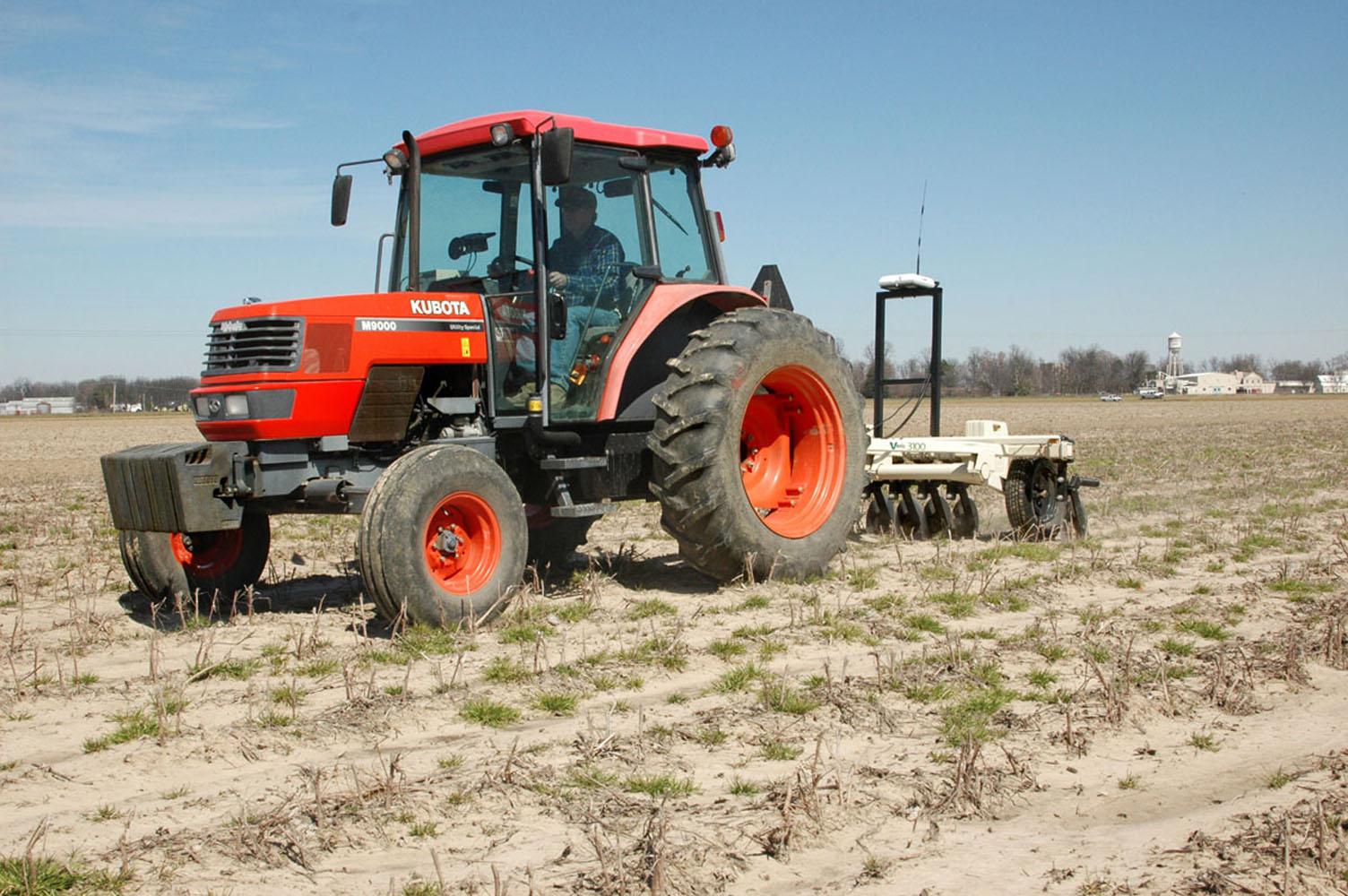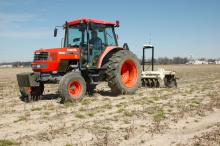Information Possibly Outdated
The information presented on this page was originally released on May 3, 2007. It may not be outdated, but please search our site for more current information. If you plan to quote or reference this information in a publication, please check with the Extension specialist or author before proceeding.
Simple organisms, but complicated solutions
By Robert H. Wells
Delta Research and Extension Center
STONEVILLE -- A Delta researcher is using new biological control technology to combat reniform nematodes, underground worms that cause Mississippi cotton producers losses of $30 million annually.
“We are the first research group in the United States to investigate using a particular fungus for the biological control of reniform nematodes in cotton,” said James W. Smith, an entomologist at the Mississippi State University Delta Research and Extension Center in Stoneville. “The product, NemOut, is labeled for nematode control on a variety of vegetable crops and turf grass. Our early field tests using NemOut show positive results in cotton boll counts.”
Smith said using a fungus that attacks nematode populations in the soil offers a practical and environmentaly-friendly alternative to current reniform controls, such as chemical nematicides, which are poisons for nematodes.
“Nematicides are somewhat effective in improving yield where the nematode infestation is severe, but the products are expensive, difficult to apply and hard to evaluate,” Smith said.
The researcher said crop rotation, especially with corn, increases cotton yields but is not always practical and has uncertain, short-term effects on nematodes. Another option, the development of reniform-resistant cotton varieties, might take a decade.
Smith will repeat the NemOut study this year using a higher concentration of the product, a formulation that the company marketing NemOut, Plato Industries, Ltd., plans to release. The Environmental Protection Agency is considering NemOut for registration in reniform nematode control in cotton, and the product could be available to cotton producers in 2008.
Aiding in Smith's research into new reniform nematode control methods is a Veris cart that maps soil types throughout the field.
“We're trying to connect soil types with nematode populations so we can predict nematode infestations and treat portions of fields rather than entire fields,” Smith said. “This has been done successfully with other species of nematodes, but it has yet to be done with reniform nematodes.”
The most common product for reniform control, Temik, is a highly toxic chemical that is a danger to lungs, skin and eyes, and can be fatal if ingested. Cotton producers are aware of Temik's health risks.
“I'd rather not use it if I didn't have too,” said Harper Ross, a cotton producer in Washington and Bolivar counties. “But I don't want nematodes either, so we just do it.”
Ross said he has seen lint yield increases of 65 to 205 pounds from using Temik on his cotton acres infested with reniform nematodes.
“You've just got to be careful handling it,” Ross said.
MSU plant pathologist Gabe Sciumbato, who has screened nematicides for six years in Stoneville, said there are several options for cotton acres with heavy reniform infestations.
“Producers may rotate their cotton with a non-host plant for reniforms, such as corn,” Sciumbato said. “Or they may apply a soil fumigant before planting. Another treatment option would be to apply 7.5 pounds of Temik per acre as a sidedress.”
The active ingredient of NemOut is an EPA-registered, fungal nematicide produced by the German company ProPhyta. Smith is working with ProPhyta through Plato Industries, Ltd.
Smith used Delta and Pine Land's DP555 seed in the study and applied in-furrow treatments as liquid spray at 20 gallons per acre at planting. He selected the research field for its high nematode infestations on sandy loam soils. He sampled all plots for nematodes prior to treatment and planting and at monthly intervals thereafter. Smith oversprayed plots weekly to eliminate insect effects and obtained yields with a research cotton picker equipped with a yield monitor.


